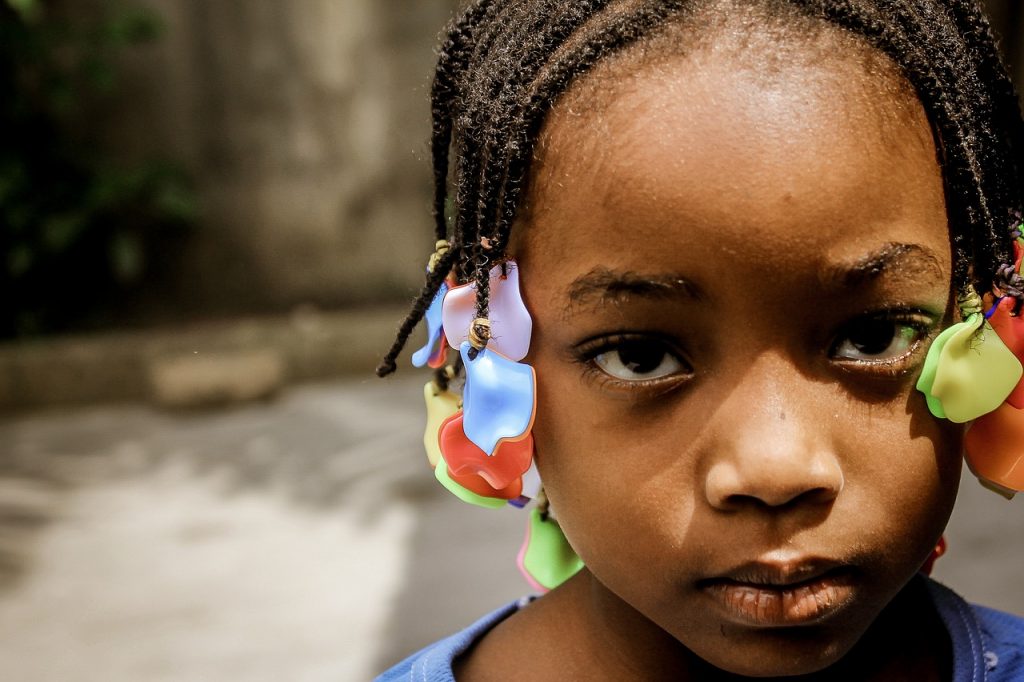Female Genital Mutilation (FGM) has received much welcomed exposure within the media recently. This is largely due to the great work carried out by various charities and organisations who work to highlight and educate us all about this important safeguarding issue. The spotlight also fell on FGM in February 2019, when a mother became the first person in the UK to be convicted under the Female Mutilation Act 2003. The woman from east-London had cut her 3-year old daughter and was sentenced to 11-years imprisonment. This coverage has hopefully impacted on safeguarding practitioners, making us think about our own learning and encouraging us to plug any gaps in our knowledge. Most safeguarding professionals should have a rudimentary understanding of FGM.
The purpose of this article is to highlight a form of FGM that has in the past been subject to some misinterpretation and which is often not recognised as a form of FGM in the communities that practice it. This form of FGM is known as labia elongation or stretching.
Labia lengthening or elongation involves pulling or stretching the labia minora (the inner lips or folds of the vulva), either manually or by using equipment such as weights or a harness.
According to the World Health Organisations (WHO) labia stretching in certain areas “entails the pulling of the labia minora and/or clitoris over a period of about 2 to 3 weeks. The procedure is usually started by an elderly woman designated this task, who places sticks of a special type to hold the stretched genital parts so that they do not revert back to their original size. The girl is instructed to pull her genitalia every day, to stretch them further, and to add additional sticks from time to time to hold the stretched parts”. (Source: FGM - Integrating the Prevention and the Management of the Health Complications into the curricula of nursing and midwifery, A Student’s Manual).
Labia stretching is generally performed to enhance sexual pleasure and satisfaction for both partners. It is believed that elongated labia will facilitate female orgasm and ejaculation. For some it is seen as a beautifying routine.
It is a cultural custom, practiced in parts of Eastern and Southern Africa, and also communities within the South Pacific region. Some communities see the process as a young girl’s rite of passage into womanhood, which if not performed, makes the girl/woman less desirable to males. A refusal can often lead to isolation and the girl and her family being stigmatised within the community. It is common for the process to start between the ages 8 to 14, usually before a girl’s menstruation cycle begins, but can continue into adulthood. However, adult women may be put under pressure to begin the procedure, either by communities, peers or partners.
Labia stretching can cause:
- pain – often severe
- open sores/wounds/ulcers if equipment is sued
- irritation - discomfort, itching and swelling
- infections
- psychological trauma
There can be no doubt that labia stretching is practiced within the UK, in migrant communities originating from areas where it is culturally accepted, but also where an individual chooses to do so by themselves, as a form of body modification. Body modification cases will be rare and unlikely to involve children or vulnerable women and more likely to be where a woman freely wants to alter her genitalia. The internet holds many weird and wonderful websites and there is one that directly promotes the practice of labia elongation – www.labiastretching.com. This rather odd site appears to be a members only forum and has a tag line that states “The ancient art of labia stretching, where every inch of added length matter”. The site describes how members can learn “what is labia stretching is all about, why do women practice it, where did originate and how do modern women engage in these practices and exactly for what reasons do, they practice the ancient art of labia stretching”.
For safeguarding practitioners, the real issue is within those communities where labia stretching is embedded in their cultural history. A research project in 2016 by the organisation Africans Unite Against Child Abuse (AFRUCA) looked at the existence of labia stretching within the UK, with focus groups from five different African communities within the Greater Manchester area – Malawi, Zimbabwe, Congo, Rwanda and Uganda. From their study they produced a report – ‘Voices of the Community: Exploring Type IV (Labia Elongation) Female Genital Mutilation in the African Community across Greater Manchester’.
The key findings in this report, highlight the challenges that safeguarding professionals face. Some of issues identified were:
- ‘participants acknowledged this practice as a cherished cultural norm that has been around for generations and did not perceive it to be mutilation nor did they classify it as FGM’.
- ‘some participants were aware of UK Anti-FGM laws but did not see any links with the Labia Elongation practised in their communities and thought it was exclusively focused on female genital cutting’.
- ‘although focus group participants have said labia elongation is sometimes carried out by the young people themselves due to peer pressure, it is highly unlikely that this will happen without the knowledge of parents–especially where no direct instructions have been given against its practice. Therefore, parents carry the overall responsibility where children engaging in labia elongation are concerned’.
It was clear from the report that there is a real safeguarding and educational issue with labia elongation. Many from the communities taking part in the focus groups, did not see the practice as a form of FGM, nor did they realise that it is a criminal offence. It is fair to say that the communities saw FGM as something far more serious than labia stretching and involving ‘cutting’ or ‘piercing’.
In our view this confusion around labia stretching hasn’t been helped by the World Health Organisation. Prior to 2007 the WHO guidelines clearly placed labia stretching into the FGM Type 4 category. Type’s 1 to 3 cover total and partial removal of the clitoris, labia and infibulation, whilst Type 4 covers all other harmful procedures to the female genitalia for non-medical purposes.
As far back as 1997 the WHO defined Type 4 as : “Unclassified: includes all other harmful procedures to the female genitalia for non-medical purposes e.g. pricking, piercing or incising of the clitoris and/or labia; stretching of the clitoris and/or labia; cauterization by burning the clitoris and surrounding tissues; scraping of tissues surrounding the vaginal orifice (angurya cuts) or cutting of the vagina (gishiri cuts); introduction of corrosive substances or herbs into the vagina to cause bleeding for the purpose of tightening or narrowing it and any other acts that fall under the definition given above”
However, in 2008 the WHO listened to the voice of academia and ‘re-labelled’ labia stretching, referring to it as a “modification” rather than “mutilation”. They also took labia elongation out of the general description of Type 4 FGM. Today, the WHO defines Type 4 as: “includes all other harmful procedures to the female genitalia for non-medical purposes e.g. pricking, piercing, incising, scraping and cauterising the genital area”.
There is no mention of elongation or stretching in their definition, or within their own factsheet. Whilst, we accept that definitions often have to change and should move with the times, the absence of labia elongation within the WHO literature, doesn’t particularly provide much clarity for safeguarding professionals and law enforcement agencies. The WHO definition is generally the adopted meaning worldwide and this includes our own Crown Prosecution Service Guidance on FGM. The CPS do not appear to give any guidance around the specific issue of labia stretching to their prosecutors, although they do say that all cases of FGM should be referred to the CPS Area FGM Lead Prosecutor who will have the knowledge and experience in dealing with FGM cases.
The NSPCC on their learning page have also summarised the current WHO definitions, Type 1 to 4 in their “what is FGM?” section, but underneath type 4 they have felt it necessary to add an extra entry that reads “Labia elongation (also referred to as labia stretching or labia pulling) involves stretching the labia minora, sometimes using sticks, harnesses or weights (AFRUCA, 2016)”. Clearly there is some concern around this point, which the NSPCC felt they need to highlight.
The law covering FGM falls under the Female Genital Mutilation Act 2003 (with various amendments) which created several criminal acts, the primary offence being under section 1: “A person is guilty of an offence if he excises, infibulates or otherwise mutilates the whole or any part of a girl’s labia majora, labia minora or clitoris”. This carries a maximum sentence of 14 years imprisonment on indictment.
In our view the wording of the legislation is also unhelpful and might well be seen as misleading by labia stretching communities. The dictionary definitions of the words used in the section are:
- excise – to remove something, especially by cutting
- infibulation – the practice of excising the clitoris and labia of a girl or woman and stitching together the edges of the vulva to prevent sexual intercourse
- mutilate – inflict a violent and disfiguring injury
There is no mention of stretching or elongation and all the highlighted words above give the impression that there is no place for labia stretching in the definition. However, the synonyms for ‘mutilate’ include mangle, maim and disfigure, which means it may well be covered. We have some experience of reading and digesting criminal legislation. It is not always easy to understand and many aspects of it often lead to lengthy debates with colleagues as to whether a particular crime has been made out, or exactly what a specific piece of wording means. However, the clarity for professionals comes from within the Government’s ‘Multi-agency statutory guidance on female genital mutilation’.
This highlights that Type 4 FGM has been considered by the Family Court in the context of care proceedings in the case B and G (Children), 2015. The judgement from the President of the Family Division stated: “It will be seen for the purposes of the criminal law what is prohibited is to “excise, infibulate or otherwise mutilate” the “whole or any part” of the “labia majora, labia minora or clitoris”. This brings within the ambit of the criminal law all forms of FGM of WHO Types I, II and III. But WHO Type IV comes within the ambit of the criminal law only if it involves mutilation”?
The President went onto say: “whether a particular case of FGM Type IV involves mutilation is in my determination not a matter for determination by the family court and certainly not a matter I need to determine in the present case. It is a matter properly for the determination by the criminal court as and when the point arises for decision in a particular case”.
The comment within the government guidance on this judgment states “It follows that from the above that, unless and until a criminal court decides the point in a particular case, there can be no certainty that any of the procedures classified by WHO as Type 4 FGM, including piercing, amounts to mutilation. The most that can be said is that Type 4 FGM may be an offence under section 1 of the 2003 Act. Whether it does in fact constitute such an offence would depend on the particular circumstances”.
In our view the message to professionals remains the same. Labia stretching should be treated as FGM and in cases involving children, it is child abuse. The responsibility to safeguard and the duty to notify for certain safeguarding professionals remains the same. However, whether it then amounts to an offence under the Female Genital Mutilation Act, will depend on the individual circumstances and will be determined by the criminal court (if prosecuted). This aides safeguarding practitioners, but is hardly helpful to those that practice the custom. Sadly, as the 2016 AFRUCA report highlighted, there is a lack of clarity, education and information being put forward to those communities.

Get Involved!
Share Your own Safeguarding News and Research to reach a wider Audience
From Our Blog
Types of Child Exploitation
An overview of differnt types of child exploitation, including sexual exploitation, county lines and criminal exploitation
Sextortion – Guide and Resources
Sextortion – a guide and links to useful resources.
DVPOs and DVPNs – Guide and Resources
Domestic Violence Protection Notices (DVPNs) and Domestic Violence Protective Orders (DVPOs) – a guide and links to useful resources.
Type 4 FGM – mixed messages
Is labia stretching a form of FGM? What are the views of the World Health Organisation? Is it against the law?
Related Posts
The Safeguarding Hub
Share Your Safeguarding News And Research To Reach A Wider Audience








